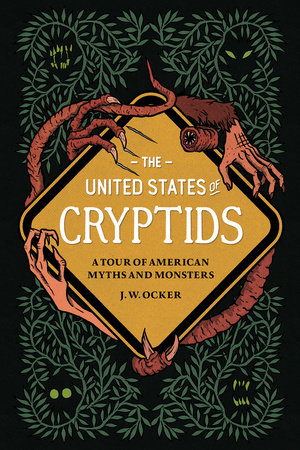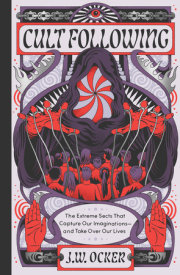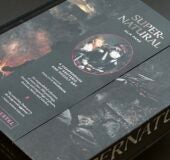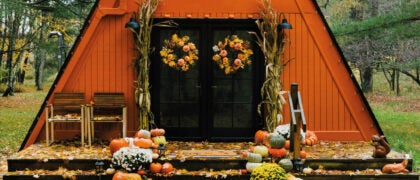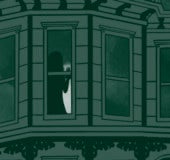Guaranteed to See a Cryptid or Your Money Back
Bigfoot exists: definitely, demonstrably, unequivocally. So do lake dinosaurs, monster cats, jet-sized birds, lizard-people, fish-people, wolf-people, moth-people, frog-people, and goat-people. All cryptids exist. Let me prove it to you. Wait, no—let me show them to you. But first: What the heck’s a cryptid?
A cryptid is a creature or species whose existence is scientifically unproven. Maybe it’s been witnessed or rumored to exist, maybe it’s even been caught on video, but there is no definitive physical evidence to examine: no body to dissect, no remains to analyze. Scientists place those creatures in the category of fantasy instead of zoology. Cryptozoologists, though, who study and pursue cryptids, place them in the entirely separate category of cryptozoology. While the fantastical Mothman and the Jersey Devil may be the first cryptids you think of, a cryptid can be as comparatively mundane as a New England panther or an American lion; animals that once existed but are now believed by the scientific establishment to be extinct. Sometimes these animals are even discovered: the coelacanth, a fish thought to have gone extinct in the age of the dinosaurs, was discovered alive in 1938. A cryptid can even be an ordinary animal that is supposedly thriving where it couldn’t be, like a population of alligators in the Manhattan sewers, or freshwater octopuses.
At least, that’s the traditional definition of a cryptid. Since cryptozoology was established in its modern form in the fifties, the definition has widened to encompass even more fantastical creatures as more people grow interested in the topic. This includes extraterrestrial entities, creatures from folklore such as mermaids and gnomes, sentient non-humans like the Menehune of Hawaii, and even (possibly) robots. This expanding definition of cryptid isn’t just because cryptozoology fans are a welcoming lot. It’s because cryptid has become synonymous with monster, of any kind. Cryptid fans love monsters, and pop culture cryptozoology is basically Pok.mon: we want to collect all the monster stories, and we want the widest variety of them in our collection as possible.
It’s a messy word, cryptid. But that’s what makes it fun. Most of us who heart cryptids are fine with that imprecision and aren’t overly invested in the -ology part of cryptozoology. We don’t camp out for weeks in dense forests knocking on trees and scrounging for bigfoot scat. We don’t charter boats and rent side-scan sonar systems to scrutinize lake bottoms for water monsters. Unlike cryptozoologists, we aren’t trying to scientifically prove the existence of cryptids—we just love the idea of them; we love the stories. And, whatever you think about cryptids, the stories are true. You many disbelieve that a lizard man attacked a car in a South Carolina swamp in the summer of 1988, but the Lizard Man mania is irrefutably documented. In other words, the story is true, regardless of whether the Lizard Man itself is real.
But I promised to show you cryptids, not just tell you about them. We’re going to focus on these fantastic beasts where we can actually find them: in the towns that claim and celebrate them, that hallow the ground of the sighting, that tie their local cryptid to their identity and geography, and that capitalize on them economically. And for whatever reason, America does cryptotourism best and biggest (apologies to Loch Ness). According to a 2018 estimate by Loren Coleman, founder of the International Cryptozoology Museum in Portland, Maine, cryptotourism generates as much as $140 million annually in the United States. And those tourists aren’t merely following tour guides into the wilderness to prove that mosquitoes exist while looking for hairy hominids. They’re partying at a festival dedicated to an alien pterodactyl that terrorized the town for five days a hundred years ago. They’re pulling up to the counter at a lake-monster-themed eatery in a county whose biggest export is a whopper of a story. They’re buying T-shirts and plushies at a monster museum in the middle of nowhere dedicated to a giant insect. They’re going to Cryptid Towns.
But sanctifying your snallygasters isn’t just tourist-trapping or trappings for tourists. Embracing a local monster can bring a community together around a shared identity. Outside of sports teams, that can be difficult to come by these days. But if you’re the town that found a giant turtle living in your local pond in the 1970s or were attacked by a vampire cat in the 1950s? That’s yours alone to own, and you can name a park after it, theme a business around it, build a museum or a statue honoring it, and propose legislation to protect it and its habitat. Wherever cryptids are celebrated, the story is so much more important than the science.
I’ve seen many of these places personally. If you tell me there’s a hodag statue in Wisconsin, I want to see it with my own eyes, same as if you told me there was an actual hodag in Wisconsin. In South Dakota, I took selfies with the world’s largest chainsaw bigfoot sculpture. In Vermont, I hiked an icy mountaintop to find Wampahoofus Trail. In Ohio, I climbed an ancient mound shaped like an underwater panther. I have been to many cryptid museums and gift shops, and I have a shelf full of souvenirs to prove it. I sometimes joke that when I say I’m hunting cryptids, what I mean is that I’m driving to a town to drink a craft beer named after one. But I did also venture into their territories. After dark, I entered the old cement bunkers in the West Virginia forest that are the lair of the Mothman. I boated from New York to Vermont across Lake Champlain looking for sinuous humps in the water. I walked through an Arizona canyon that skinwalkers are known to haunt—but only after I drove to town to see if they had any craft beers named after them.
Sadly, not every town with a cryptid story commemorates it. But I haven’t left those cryptids out of this book. It’s not their fault. I tell the stories of these unsung cryptids and pitch the reasons why they deserve to be turned into local attractions. And if one of these towns erects so much as an informational sign in honor of their monster because of this book, then I count this project a success, regardless of the metrics of my publisher.
But cryptids exist in yet another way beyond stories and monuments. Many who love cryptids love them more as symbols of the natural world than as secrets of it. Cryptids are hopeful concepts: hope that the world is still a diverse place full of discovery. Hope that humankind hasn’t zoned every square inch of the planet for McDonald’s franchises. Hope that we haven’t grown bored with our mother planet, that she still harbors wonders for us. Cryptids exist: as stories, as monuments, as symbols. Maybe even as more than that. But those three ways already make them as much a part of this planet as any officially acknowledged creature in a zoology textbook. Now, let’s go party with some monsters. Because we’re going to find them—guaranteed.
Copyright © 2022 by J. W. Ocker. All rights reserved. No part of this excerpt may be reproduced or reprinted without permission in writing from the publisher.





